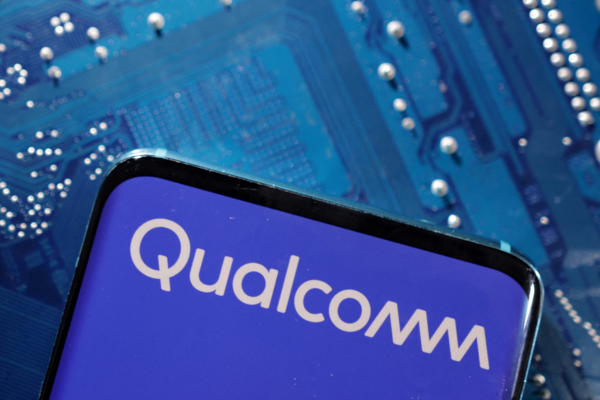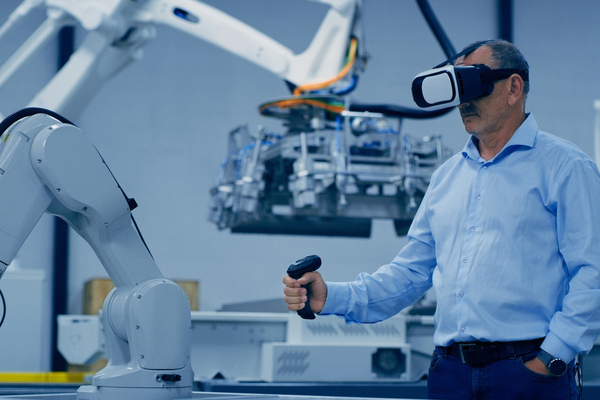Computer vision: eyes on innovation and productivity

Margarita Lindahl at Panasonic Connect Europe argues that computer vision technology is set to bolster innovation and transform European business productivity
European decision-makers are predicting that computer vision applications, powered by advances in generative AI, will help businesses burst through the productivity glass ceiling in 2024 and the next three years.
The buzz around artificial intelligence (AI) saturates the media landscape, from the rapid evolution of generative AI and ChatGPT, to EU regulations shaping its use, and the burgeoning suite of innovative creative tools revolutionising video and image editing. However, the tangible impact on productivity and financial metrics has so far remained elusive.
But some recent research suggests all that is about to change. At the forefront of this transformation is computer vision technology, poised to lead the charge in realising the full potential of AI, potentially even outpacing the predictions of Gartner hype cycle. And for European businesses, it could not have come at a better time.
Over the past decade, productivity growth has largely stagnated. Despite advancements in technology and increases in workforce education and skills, the expected surge in productivity has remained elusive.
Economic analysts point to a complex web of factors contributing to this stagnation, including aging infrastructure, regulatory barriers, and a hesitance to fully embrace digital transformation across all sectors.
The aftermath of the financial crises and the ongoing challenges posed by geopolitical uncertainties have further complicated the landscape, leading to cautious investment strategies and a focus on short-term stability over long-term innovation.
But against this backdrop, the adoption of computer vision technology, powered by advances in generative AI, looks set to help businesses finally breakthrough the productivity glass ceiling. A recent survey among AI business decision-makers reveals a striking consensus: the implementation of computer vision applications is expected to boost productivity by an astonishing 42% on average over the next three years.
The manufacturing sector, in particular, stands on the cusp of a transformative leap, with anticipated productivity boosts reaching as high as 52%. It seems that computer vision is well on the ascent to the Plateau of Productivity identified in Gartner’s hype cycle for AI.
The eyes of AI
Computer vision, often described as the "eyes of AI," enables computers and systems to extract meaningful information from digital images. This technology observes, identifies, classifies, tracks, and interprets images into actionable information, paving the way for further analysis either by people or complementary AI systems.
The versatility of computer vision is evident in its widespread application across numerous business departments, from repairs and maintenance, production line monitoring, and quality control, to security, health and safety, logistics, supply chain management, real-time projection mapping, and people tracking. This broad spectrum of use cases underscores the transformative potential of computer vision technology.
Barriers remain to overcome
However, it’s not all clover. Despite their enthusiasm for the technology, research respondents still faced significant challenges in deploying it. The lack of external specialist support and difficulties in maintaining computer vision expertise within organisations emerge as the primary barriers, cited by 37% and 33% of respondents, respectively.
Additionally, the deployment of AI-powered computer vision applications raises considerable ethical concerns, with data security, personal privacy, surveillance, lack of corporate guidance, and fears of job displacement being the major apprehensions among businesses.
Wider generative AI surging ahead
But organisations seem determined to overcome these challenges for the productivity pot of gold at the end of the rainbow. And the enthusiasm for AI does not stop at computer vision; the wider adoption of generative AI is also surging ahead.
According to the research, more than two-thirds (67%) of respondents deem using generative AI important for their business. With over a third (37%) already reaping the benefits of implemented solutions, and an equal proportion in the planning or implementation stages, the trajectory for AI deployment appears strong. Just a minority remain hesitant, still reflecting on the broader challenges and considerations that accompany AI integration into business practices.
It’s clear from this latest research that business leaders see that computer vision applications present a major opportunity for European businesses. They provide a chance to leapfrog the barriers to productivity growth by automating complex processes, enhancing decision-making with deep data insights, and fostering innovative services and products.
Computer vision symbolises a broader shift towards a future where technology and human ingenuity combine to overcome the productivity stagnation that has plagued Europe’s economic landscape.
Margarita Lindahl is Head of AI, PR and Social Media at Panasonic Connect Europe
Main image courtesy of iStockPhoto.com and ArtemisDiana

Business Reporter Team
Most Viewed
23-29 Hendon Lane, London, N3 1RT
23-29 Hendon Lane, London, N3 1RT
020 8349 4363
© 2024, Lyonsdown Limited. Business Reporter® is a registered trademark of Lyonsdown Ltd. VAT registration number: 830519543
Join the Business Reporter community today and get access to all our newsletters, and our full library of talk show episodes
Join the Business Reporter community today and get access to all our newsletters, and our full library of talk show episodes





